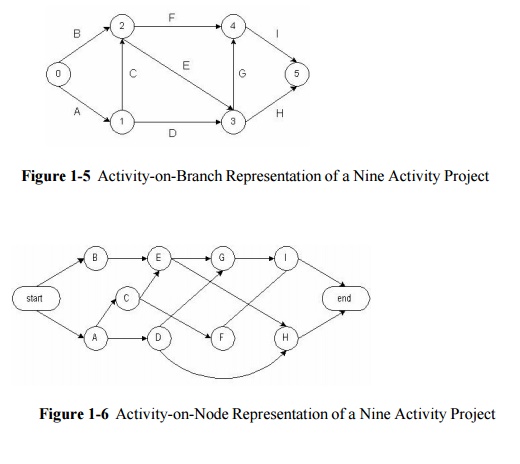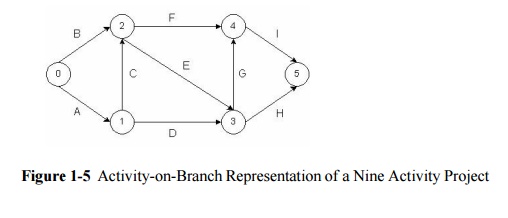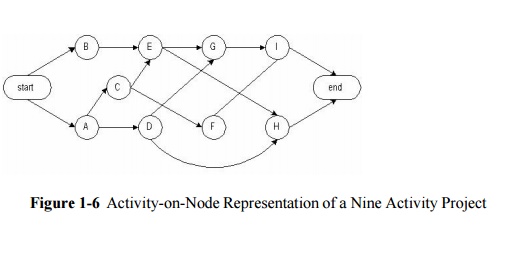Chapter: Civil : Construction Planning And Scheduling
Precedence Definition for Site Preparation and Foundation Work

Civil - Construction Planning And Scheduling
Precedence
Definition for Site Preparation and Foundation Work
Suppose that a site preparation and concrete slab
foundation construction project consists of nine different activities:
A.Site
clearing (of brush and minor debris),
B. Removal
of trees,
C.General
excavation,
D.Grading
general area,
E. Excavation
for utility trenches,
F. Placing
formwork and reinforcement for concrete,
G.Installing
sewer lines,
H. Installing
other utilities, I. Pouring concrete.
Activities A (site clearing) and B (tree removal) do not have
preceding activities since they depend on none of the other activities. We
assume that activities C (general excavation) and D (general grading) are
preceded by activity A (site clearing). It might also be the case that the
planner wished to delay any excavation until trees were removed, so that B
(tree removal) would be a precedent activity to C (general excavation) and D
(general grading).
Activities E (trench excavation) and F (concrete preparation)
cannot begin until the completion of general excavation and tree removal, since
they involve subsequent excavation and trench preparation. Activities G
(install lines) and H (install utilities) represent installation in the utility
trenches and cannot be attempted until the trenches are prepared, so that
activity E (trench excavation) is a preceding activity. We also assume that the
utilities should not be installed until grading is completed to avoid equipment
conflicts, so activity D (general grading) is also preceding activities G
(install sewers) and H (install utilities). Finally, activity I (pour concrete)
cannot begin until the sewer line is installed and formwork and reinforcement
are ready, so activities F and G are preceding. Other utilities may be routed
over the slab foundation, so activity H (install utilities) is not necessarily
a preceding activity for activity I (pour concrete). The result of our planning
are the immediate precedences shown in Table 1-1.
With this
information, the next problem is to represent the activities in a network
diagram and to determine all the precedence relationships among the activities.
One network representation of these nine activities is shown in Figure 9-5, in
which the activities appear as branches or links between nodes. The nodes
represent milestones of possible beginning and starting times. This
representation is called an activity-on-branch diagram. Note that an initial
event beginning activity is defined (Node 0 in Figure 9-5), while node 5
represents the completion of all activities.

Alternatively, the nine activities could be
represented by nodes and predecessor relationships by branches or links, as in
Figure 1-6. The result is an activity-on-node diagram. In Figure 9-6, new
activity nodes representing the beginning and the end of construction have been
added to mark these important milestones.
These
network representations of activities can be very helpful in visualizing the
various activities and their relationships for a project. Whether activities
are represented as branches (as in Figure 1-5) or as nodes (as in Figure 1-5)
is largely a matter of organizational or personal choice. Some considerations
in choosing one form or another are discussed in our website.

It is
also notable that Table 1-1 lists only the immediate predecessor relationships.
Clearly, there are other precedence relationships which involve more than one
activity. For example, "installing sewer lines" (activity G) cannot
be undertaken before "site clearing" (Activity A) is complete since
the activity "grading general area" (Activity D) must precede
activity G and must follow activity A. Table 1-1 is an implicit precedence list
since only immediate predecessors are recorded. An explicit predecessor list
would include all of the preceding activities for activity G. Table 1-2 shows
all such predecessor relationships implied by the project plan. This table can
be produced by tracing all paths through the network back from a particular
activity and can be performed algorithmically. For example, inspecting Figure
1-6 reveals that each activity except for activity B depends upon the
completion of activity A.
Related Topics